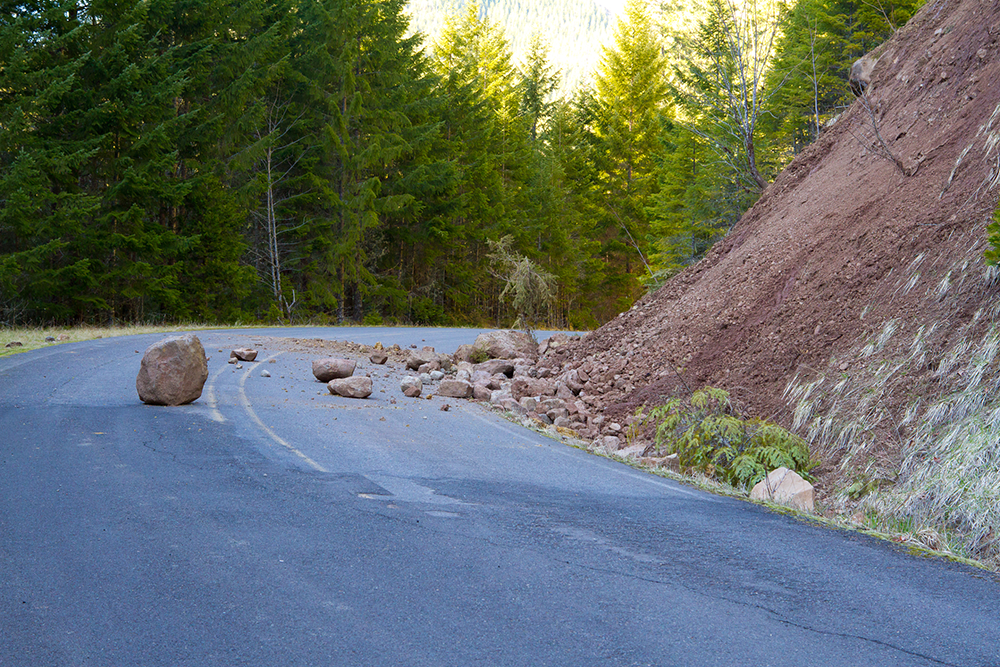Five tire tips for safe summer driving

Sudden thunderstorms, road debris, oily asphalt, cone zones—all of these conditions can make for hazardous summer driving. The problems can become life-threatening when driving on bald or damaged tires.
So says Daniel Zielinski, vice president of communications at the Rubber Manufacturer’s Association.
“Tires are engineered to handle a lot of stress as long as they are maintained properly,” Zielinski said. “Once the integrity of components is damaged, tires ultimately will come apart.”
What are the five most important items every driver should know about their tires?
Basic tire care comes down to proper inflation, tread wear, rotation, alignment and driving habits.
“The worst enemy for tires is always heat,” Zielinski said. “This is especially severe in summertime if your vehicle is heavily loaded.”
Hot pavement—especially in states such as Nevada, Arizona and across the south—decreases tire life and increases risk of failure. That is especially true when driving on an underinflated tire.
“Families stuff everything into their vehicle before going on vacation,” Zielinski cautioned. “Extra weight increases tire heat and risk of failure.”
Simple routine checks of your tires will make your vehicle safer to drive and improve handling, increase fuel economy and extend the life of your tires.
“You should perform a visual inspection every month to identify any wear problems,” said Daniel Zielinski, “Inspect tires for cuts, scrapes and odd wear patterns.”
Tire tread offers an early warning sign for other maintenance issues. For instance, bald spots may indicate a wheel that is out of balance. Or wear along the center of the tire may indicate an overinflated tire or poor alignment.
Braking and steering problems have a direct correlation to tire care, Zielinski said. Tires with little or no tread may “hydroplane,” or glide, along wet roads. Your vehicle may slide rather than stop when you apply the brakes.
The National Highway Traffic Safety Administration and Rubber Manufacturers Association offer five tire safety tips to help prevent accidents this summer:
1. Proper tire inflation. Check tire pressure monthly including the spare, and always before taking a long trip.
Overinflation and underinflation lead to uneven tread wear and shortening the life of your tires. Use the air pressure guidelines recommended by the vehicle manufacturer, not the tire manufacturer. A vehicle too heavily loaded will put undue pressure on the tires which could lead to a blowout, and pulling a boat or trailer places additional pressure on the tires.
2. Tread wear. Visually inspect the tread of all four tires. Look for bulges, cracks and other signs of trauma or wear. Remove any foreign objects such as rocks or glass that are wedged in the tread.
Take the “penny test” to read the amount of tread depth left in your tire. Insert a Lincoln penny with Lincoln’s head pointing down into the tire tread. If you can see any of Lincoln’s head, then it is time to replace your tires.
3. Inspect wheel alignment yearly or when you suspect a problem. For instance, alignment issues may cause your vehicle to pull to one side or the other. They also may indicate serious damage in steering and suspension systems.
According to some estimates, alignment problems can reduce tire life by half. Common causes include curbs, speed bumps, cracked pavement, construction zones and potholes.
4. Regular tire rotation. Rotating tires on a regular basis prevents uneven wear. For vehicles with tires all the same size, rotate from front to back and side to side to maintain even tread wear. See your vehicle maintenance manual for rotation mileage intervals.
5. Driving habits. Objects and debris could damage the lining of your tire and cause bulges in the sidewall. Although they may not go flat immediately, damaged sidewalls can cause blowouts and leave you stranded miles from home.
Skidding takes its toll on tread. Careful acceleration and braking can help extend life of tires.
“You should perform a visual inspection every month to identify any wear problems,” Zielinski said. “Inspect tires for cuts, scrapes and odd wear patterns.”